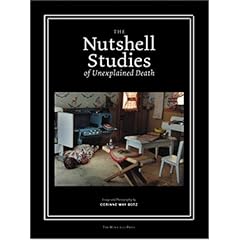Like many people, my digital music library began well before I had an iPod or iTunes, and has survived several iterations of sketchy HDD based iPods, corrupt iTunes libraries, failed computers & hard drives and everything in between. Recently I found myself with an iPod that wouldn't sync, 10K+ songs (many of them duplicates - and many simply labeled 'track 1', 'track 2' etc) and two branch libraries from my wife and daughter, both of which had a combination of songs, some duplicating songs in my library (and each others) and some not. This weekend I decided to fix all these problems and found a number of tools that really simplified things. Here are the solutions associated with each problem. 1. Partially labeled songs - Early songs of mine which I copied from CD's (before robust programs and before I knew any better) labeled "track 1" etc, some with album artist info, some not. For this issue, I found an app called Tune Up, which is like Shazam for iTunes (which is exactly what I put in Google search). Simply put, Tune Up, scans through your library and pretty seamlessly identifies each song, album, artist and artwork and updates your library accordingly. This cost $25 for a year's subscription and is worth twice that - it performed flawlessly - really, and my library includes a lot of weird sampler CD's from magazines and such...it even identified those perfectly. 2 & 3 Duplicates and Multiple Libraries. - I looked for a deduper for iTunes, and there were quite a few, but I found a much simpler solution. I downloaded WinMerge which is like a UX Diff utility for Windows. While the tool is intended for source code management, it works pissah for iTunes libraries. Basically you select two folders (the iTunes music directories you want to compare) and it spits out the differences (and not just the usual file name/date/size) but actual differences. Once WinMerge has finished it's work (which happens in seconds - even on a 10k file lib) you it's a simple right click to move the missing files over to your lib. WinMerge is free, but it's priceless - it really works that well. It might even beat out Notepad++ and MySQL for best freeware. It is a great answer to a simple and common problem. 4. iPod that won't sync - I had/have a first edition iPod classic 160gb that refused to sync about two years after I bought it. Among other symptoms, it during the sync, Windows XP would throw the error "Wrong Volume, please insert 'X' Volume" or simply an iTunes -50 error. The frustrating thing was that I managed to get it to sync successfully once despite the error, which led me to believe it was an iTunes/Windows/Corrupt File issue. Well, it wasn't, it actually half crapped out, a new iPod solved that problem easily. 5. Downloaded Songs Only on iPod - my daughter, buys itunes songs (on my account) but only downloads them directly to her iPod Touch over WiFi. Obviously I need to get these added to my Lib so we don't lose them if her iPod craps out. For this problem, the Copy Trans suite is the best solution, these guys do a great job and it is reasonably priced, I highly recommend all their programs. 6. Duplicate Songs In One Library- This problem arose out of previous attempts to fix the other issues, leaving me with a mess of actual duplicates (some disguised under the aforementioned "track_1", "track_2") and semi duplicates, songs that were duplicated on anthologies for example. For this issue there is actually an iTunes solution, if you hold down 'shift' while clicking on the iTunes 'file' menu, you will see an option to view only 'exact' duplicates. While it is still a manual delete, it is very easy once you don't have to wade through the not actually duplicates. Best (and only) semi hidden iTunes feature. Well, that's it, good luck, I hope you can learn from my issues. |
Trump Officials Seek to Bring First White Afrikaner Refugees to U.S. Next
Week
-
The rapid relocation of the Afrikaners, who President Trump says have been
racially persecuted in South Africa, stands in stark contrast to the
virtual shu...
1 hour ago





































